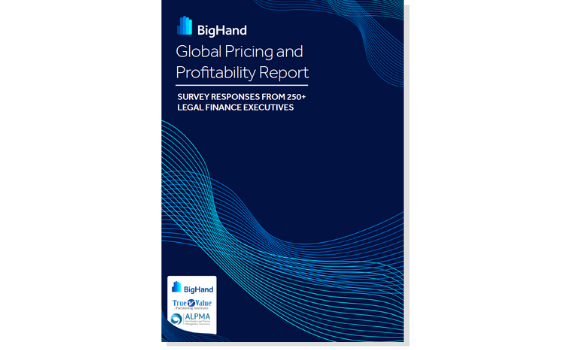Posted on November 10, 2020 by Joseph Lamport
 What I enjoy most about good content marketing is that it reverses our expectations about where we are likely to find the most interesting and substantive content in the latest issue of a newspaper or newsletter. There’s a good likelihood that a good marketer’s message will truly turn out to be the most attention-worthy piece of news these days.
What I enjoy most about good content marketing is that it reverses our expectations about where we are likely to find the most interesting and substantive content in the latest issue of a newspaper or newsletter. There’s a good likelihood that a good marketer’s message will truly turn out to be the most attention-worthy piece of news these days.
That certainly is the case with the Legal Pricing and Profitably Survey 2020 produced by BigHand in cooperation with its partners True Value Partnering Institute and The Australasian Legal Practice Management Association. (Click here to download your own copy of the full text of the 2020 Report.) It is very much attention worthy for anyone interested into digging into revealing data about the state of today’s legal market.
The headline numbers are striking about the impact of the COVID-19 pandemic. In the North American market, 66% of all pricing professionals surveyed indicated that they had experienced increased pressure on legal fees from clients over the course of the last year. At the same time, 57% of all those pricing professionals said that clients have increased the frequency with which they are challenging bills and pushing for fee discounts. It’s worth noting that the survey found the pressure from clients on fees was significantly higher in the US market than in Europe and Asia.
Even more striking is what the survey tells us about how well (or not) US law firms are positioned to respond to the mounting fee pressure from clients. At best, the survey indicates that a majority of US law firms are only at the early stages of implementing business and practice improvements that would enable them to respond effectively. Consider, for example, the following findings:
In other words, even at this late date, the majority of mid-size and big law firms in the US have not yet implemented a consistent approach to practice and matter management that gives them effective control over budgeting, tracking performance, billing and profitability analysis.
Mind you, this management shortcoming could be attributable to a variety of different causes – and I hope BigHand will dig deeper into that question as they undertake further market research. But for now, here is perhaps the most surprising finding of all in this year’s report:
This to me is downright gobsmacking. I really can’t begin to imagine how you could budget let alone manage a legal matter (of even moderate complexity) using Excel as your primary tool. If you’re one of the law firms that finds itself in that position, let me suggest that you owe it to yourself (to say nothing of your clients) to find out just how much more effective management control you can achieve by using a dedicated legal pricing tool.
Many thanks to BigHand for giving us clarity about where law firms currently stand in being able to address their clients’ demands for more pricing control and certainty. To learn more about these data results, you can join BigHand TVPi on November 17th as they walk through the research and data findings. Click here to register for the program.
Also, for firms looking for ways to enhance their control over the budgeting and pricing process, here’s where you can find more information about BigHand’s dedicated pricing solution, BigHand Evaluate.